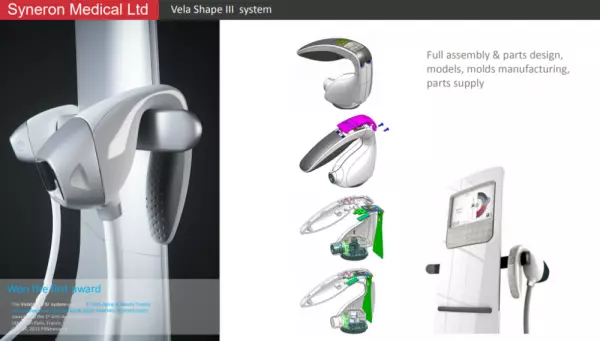
Medical technology laser dermatology, body...
LASER DERMATOLOGY, BODY SHAPING Hardware MPE / Rimoni offers LASER DERMATOLOGY for medical technolo...
Portal and digital medical technology fair of the largest MedTech cluster in Germany

Medical technology laser dermatology, body...
LASER DERMATOLOGY, BODY SHAPING Hardware MPE / Rimoni offers LASER DERMATOLOGY for medical technolo...

There are several types of Dermatological lasers. There are non-ablative and ablative lasers. The ablative type is the preferred choice for vascular lesions because of its low risks and high clinical efficacy. This type of treatment also allows for a large spot size, which helps the doctor treat large lesions quickly. The procedure does carry some risks, including postoperative bruising that may last for two to three weeks. Some people may develop scarring or transient pigmentation changes, but these are very rare.
A modern laser has an optical cavity that contains a liquid, gas, or solid. The laser excite molecules in the medium and produce photons of light. Depending on the target tissue, the wavelength produced is different. A dermatologist chooses the appropriate wavelength depending on the area of skin he or she wants to treat. There are three types of laser light: monochromatic laser light produces a single-wavelength beam. Collimated laser light destroys target cells while sparing nearby tissue.
The laser has many advantages. It produces a non-thermal zone of impact that is much smaller than with alternative methods. It heals wounds without leukocyte infiltration. The power density of the laser allows it to selectively affect pathological tissues without affecting neighboring tissue. The wavelength chosen by the dermatologist depends on the type of tissue to be treated. When the beam reaches the target area, it impacts a specific section of biological tissue, or groups of cells.
A modern laser has a cavity that contains a liquid, gas, or solid. Molecular movement causes electrons to be excited by the light. These photons are called photons, and the wavelength produced is a product of this process. A dermatologist chooses the right wavelength based on the type of tissue he or she is treating. Because of this, the laser light is multi-wavelength, and it can destroy a single cell while sparing the surrounding tissue.
Merz North America has recently expanded its aesthetic portfolio by acquiring ON Light Sciences, a U.S. medical device company that develops innovative technologies to enhance the quality of dermatologic laser treatments. Its latest product, the DeScribe Transparent PFD patch, is used for tattoo removal. Its patent portfolio is extensive, and the technology allows for a faster treatment time. In addition to the cosmetic laser, the company also provides various types of laser therapy for different types of skin.
Unlike IPL, a dermatological laser uses analogous fee items. The number of changes treated is not the only consideration, but the recovery time is also important. For example, an 18 cm2 area of verrucae vulgaris can be treated with one session. A four-cm2 area of skin can be treated with an infrared laser in one session. A 30-minute Discovery Call is a good way to learn more about this treatment method.
On the other hand, a laser can also be used in a medical setting. It is an optical source that emits light, which is reflected back into the body. The light is absorbed by the tissue, causing it to change its color. During a procedure, a dermatologist will use an O.R. to target the melanin pigment. The treatment can also be done on a different area of the body.
Another type of dermatologic laser is a dye laser. This type of treatment is effective in treating pigment-rich structures such as nevi flammei. It is also effective in treating senile angiomas and a variety of other vascular lesions. Its effect is based on selective photothermolysis, meaning that the light is converted into heat and damages the targeted structure. There are also other types of Lasers for the vascular and non-vascular skin.
As with other types of Lasers, erbium lasers are effective in treating a wide range of skin conditions. They use the same wavelength as CO2 lasers and do the same thing, but they are less damaging to skin, but they produce more heat. The two types of Dermatological lasers are different and they should be used by a physician who has experience with both. The best type of treatment depends on the individual patient's needs and their needs.
Lasers are used to treat a variety of skin conditions. These treatments can help reduce acne and keloids and improve the appearance of facial scars. Some people also use a dermatologist to remove unwanted tattoos and body hair. They can also use blue lasers to reduce their symptoms. Aside from acne, dermatological lasers can be used to treat many other skin conditions. A physician will use a combination of light therapies to treat a variety of conditions.
Become a digital exhibitor yourself in the online portal of the largest and best-known MedTech cluster region in Germany and inform the world of medical technology about your products and services as well as about news, events and career opportunities.
With an attractive online profile, we will help you to present yourself professionally on our portal as well as on Google and on social media.